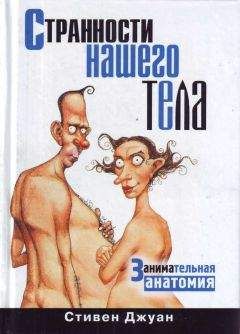185
Justice B., Justice R., Kraft I. Early-warning signs of violence: Is a triad enough? // American Journal of Psychiatry. 1974. Vol. 131. No. 4. P. 457–459. Доктор Блэр и коллеги работают в Школе общественного здоровья в Техасском университете в Хьюстоне.
Lewis D., Shanok S., Grant M., Ritvo E. Homicidally aggressive young children: Neuropsychiatric and experimental correlates // American Journal of Psychiatry. 1983. Vol. 140. No. 2. P. 148–153. Доктор Дороти Льюис и коллеги – психиатры из медицинского центра Нью-Йоркского университета.
Kellert S., Felthous A. Childhood cruelty toward animals among criminals and noncriminals // Human Relations. 1985. Vol. 38. No. 12. P. 1113–1129. Доктор Стивен Келлерт работает в Йельском университете, доктор Алан Фелтхаус – в Техасском университете в Галвестоне.
Kelso J., Stewart M. Factors which predict the persistence of aggressive conduct disorder // Journal of Child Psychology and Psychiatry. 1986. Vol. 27. No. 1. P. 77–86. Докторá Джейн Келсо и Марк Стюарт работают на факультете психиатрии университета Айовы.
Labelle A., Bradford J., Bourget D., Jones B., Carmichael M. Adolescent murderers // Canadian Journal of Psychiatry. 1991. Vol. 36. P. 583–587. Доктор Алан Лабелл и коллеги – психиатры, работающие в Королевской больнице и университете Оттавы.
Juan S. Childhood can hold the clues to homicidal behaviour // The Times on Sunday. 26 April 1987. P. 21–22.
Juan S. Deadly reasons why kids become killers // The Sydney Morning Herald. 9 April 1992. P. 12.
Kleiner K. Seizures may have triggered murders // New Scientist. 24 February 1996. P. 11.
Исследование А. Ариэли и др. приводит К. Эбох. Seeing is deceiving // Psychology Today. March – April 1996. P. 24. Доктор Амос Ариэли и коллеги работают в Институте имени Вейцмана (Реховот, Израиль).
Achenbach J. Exploding myths of serial killers // The Washington Post. 22 April 1991. P. C3, C5.
Ressler R., Shachtman T. Whoever Fights Monsters: My Twenty Years Hunting Serial Killers for the FBI. N. Y.: St. Martin’s Press, 1992. Том Шахтман – журналист из Нью-Йорка.
Ullman J. I carried it too far, that’s for sure // Psychology Today. May – June 1992. P. 28–31.
Juan S. Serial killer: From loveless home to grisly fantasy world // The Sydney Morning Herald. 3 September 1992. P. 15.
Neimark J. The cinema in your head // Psychology Today. May – June 1995. P. 22.
Andrews M. 1 inch from death // Weekly World News. 26 March 1996. P. 15.
Schmeck H. Researchers link region in brain to obsessive disorder // The New York Times. 8 March 1988. P. Y15, Y 18.
Lucey J., Costa D., Blanes T., Busato G., Pilowsky L., Takei N., Marks I., Ell P., Kerwin R. Regional cerebral blood fl ow in obsessive-compulsive disordered patients at rest. Differential correlates with obsessive-compulsive and anxiousavoidant dimensions // British Journal of Psychiatry. 1995. Vol. 167. P. 629–634.
Jenike M., Breiter H., Baer L., Kennedy D., Savage C., Olivares M., O’sullivan R., Shera D., Rauch S., Keuthen N., Rosen B., Caviness V., Filipek P. Cerebral structural abnormalities in obsessive-compulsive disorder: A quantitative morphometric magnetic resonance imaging study // Archives of General Psychiatry. 1996. Vol. 53. P. 625–632. Доктор М. Дженике и коллеги работают в Массачусетской больнице в Бостоне.
Toates F. Obsessional Thoughts, Behaviour: Help for Obsessive Compulsive Disorder. Sydney: Thorsons, 1990. Доктор Фредерик Тоутс – психобиолог из Открытого университета в Лондоне.
Rapoport J. The Boy Who Couldn’t Stop Washing: The Experience, Treatment of Obsessive-Compulsive Disorder. N. Y.: E. P. Dutton, 1996.
Juan S. The Odd Body. Sidney: HarperCollins, 1995. P. 135–138.
Feldman M., Ford C. Patient or Pretender: Inside the Strange World of Factitious Disorders. Brisbane: John Wiley, 1994.
Weatherup J., Scatena D. Te n personal pointers to Jacko // The Daily Telegraph (Sydney). 13 November 1996. P. 5.
Miller R. Fatal obsession // The Australian Magazine. 29–30 July 1989. P. 8—12, 15–16.
Wilson C. The Misfi ts: A Study of Sexual Outsiders. Sydney: Grafton, 1989.
Koran K., Theineman M., Davenport R. Quality of life for patients with obsessive-compulsive disorder // American Journal of Psychiatry. 1996. Vol. 153. P. 783–788.
Bolton D., Luckie M., Steinberg D. Long-term course of obsessive-compulsive disorder treated in adolescence // Journal of the American Academy of Child and Adolescent Psychiatry. 1995. Vol. 34. P. 1441–1450.
Hollander E., Kwon J., Stein D., Broatch J., Rowland C., Himelein C. Obsessive-compulsive and spectrum disorders: Overview and quality of life issues // Journal of Clinical Psychiatry. 1996. Vol. 57. Suppl. 8. P. 3–6.
Glausiusz J. The chemistry of obsession // Discover. June 1996. P. 36.
Broder T. Hooked on water // Weekly World News. 26 March 1996. P. 3.
Исследование У. Шервуда приводит С. Джуан. AIDS adds to fear of blood and needles // The Sydney Morning Herald. 4 June 1992. P. 12. Доктор Уильям Шервуд – вице-президент биомедицинской службы американского Красного Креста в Вашингтоне.
Ost L.-G. Blood and injection phobia: Background and cognitive physiological, and behavioral variables // Journal of Abnormal Psychology. 1992. Vol. 101. P. 68–74. Доктор Ларс-Горан Ост – психиатр, работает в больнице Уллеракера и Уппсальском университете, Швеция.
Maltin L. Leonard Maltin’s 1996 Movie, Video Guide. N. Y.: Signet, 1995. P. 54.
DeJong P., Merchelbach H., Arntz A., Nijman H. Covariation detection in treated and untreated spider phobics // Journal of Abnormal Psychology. 1992. Vol. 101. P. 724–727.
Kirkby K., Menzies R., Daniels B., Smith K. Aetiology of spider phobia: Classificatory differences between two origins instruments // Behavior Research and Therapy. 1995. Vol. 33. P. 955–958.
Francis R., Stanley G. Estimating the prevalence of dental phobia // Australian Dental Journal. 1990. Vol. 35. P. 449–453.
Интервью с Дж. Г. Рубином приводит П. Эйвери. Good news for dental phobics // American Health. May 1989. P. 46, 48. Доктор Дж. Гордон Рубин – стоматолог, работает с проблемами зубной фобии в больнице «Гора Синай» в Нью-Йорке.
Walker E., Milgrom P., Weinstein P., Getz T., Richardson R. Assessing abuse and neglect and dental fear in women // Journal of the American Dental Association. 1996. Vol. 127. No. 4. P. 485–490. Доктор И. А. Уолкер и коллеги работают на кафедре психиатрии и наук о поведении Вашингтонского университета в Сиэтле.
Gross P. Is pain sensitivity associated with dental avoidance? // Behavior Research and Therapy. 1992. Vol. 30. No. 1. P. 7—13. Доктор П. Р. Гросс работает в Национальной полиции в Марсдене, Южная Австралия.
Jongh, A. De; Muris P.; Horst, G. ter; Zuuren, F. van; Schoenmakers N.; Makkes P. One-session cognitive treatment of dental phobia: Preparing dental phobics for treatment by restructuring negative outcomes // Behaviour Research and Therapy, 1995. Vol. 33. No. 8. P. 947—54. Доктор А. де Джонг и коллеги работают в Академическом стоматологическом центре в Амстердаме.
Интервью с Т. Гетц от 17 июля 1997 г. Доктор Трэйси Гетц – психиатр из отделения психиатрии и наук о поведении Вашингтонского университета в Сиэтле.
Juan S. Dentist? Give me the pliers // The Sydney Morning Herald. 10 August 1989. P. 13.
American Psychiatric Association’s. Diagnostic and Statistical Manual of Mental Disorders (DSM-IV). 4 edn. Washington, DC: American Psychiatric Association, 1994. Стандарты для Австралии установлены международными соглашениями о DSM-IV.
Epstein R. Why shrinks have so many problems // Psychology Today. July – August 1997. P. 58–60, 62, 74, 76, 78.
Wilks C. Treatment of a dental phobic with pronounced aversion to rubber gloves by swallowing relaxation in two appointments // British Dental Journal. 1993. Vol. 175. No. 3. P. 88–89.
Исследование Э. Кендела приводит А. Викельгрен. Protein switch may unlock the secrets of long-term memory // The New York Times. 10 December 1996. P. 1. Доктор Эрик Кендел – нейробиолог из Колумбийского университета в Нью-Йорке.
Klawans H. Toscanini’s Fumble and Other Tales of Clinical Neurology. N. Y.: Bantam Books, 1988. P. 24–25.
Исследование П. Кохрейна приводит М. Уорд. End of the road for brain evolution // New Scientist. 25 January 1997. P. 14. Доктор Питер Кохрейн работает в BT Laboratories в Лондоне.
J. May. The Book of Curious Facts. L.: Collins and Brown, 1993. P. 18–19.
Carlesimo G., Caltagirone C. Components in the visual processing of known and unknown faces // Journal of Clinical and Experimental Neurology. 1995. Vol. 17. P. 691–705.
Bauer R. Autonomic recognition of names and faces in prosopagnosia: A neuropsychological application of the guilty knowledge test // Neuropsychologia. 1984. Vol. 22. P. 457–469.
Tranel D., Damasio A. Knowledge without awareness: An autonomic index of facial recognition by prosopagnosics // Science. 1985. Vol. 228. P. 1453–1454.
Renault B., Signoret J., Debruille B., Brepon F., Bolger F. Brain potentials reveal covert facial recognition in prosopagnosia // Neuropsychologia. 1989. Vol. 27. P. 905–912.
Damasio A. Neuropsychological applications of the GKT // Proceedings of the Society for Neuroscience. 1989. Vol. 7. P. 38–47. Доктор Антонио Дамазио – нейропсихолог из медицинского колледжа университета Айовы.
Macrae D., Trolle E. The defect of function in visual agnosia // Brain. 1956. Vol. 79. P. 94—110.
McNeil J., Warrington E. Prosopagnosia: A face-specific disorder // Quarterly Journal of Experimental Psychology (A) Human Experimental Psychology. 1993. Vol. 46. P. 1—10.
Evans J., Heggs A., Antoun N., Hodges J. Progressive prosopagnosia associated with selective right temporal lobe atrophy. A new syndrome? // Brain. 1995. Vol. 118. P. 1—13.
Juan S. Prosopagnosia // The Sydney Morning Herald. 31 January 1991. P. 12.
Sacks O. The Man Who Mistook His Wife for a Hat. L.: Picador, 1985. P. 12.
Time-Life Books. Mysteries of the Human Body. Alexandria, Virginia: Time-Life Books, 1990. P. 13.
Reuters. China Brain. 14 October 1996.
Rosenfield I. The Invention of Memory: A New View of the Brain. N. Y.: Basic Books, 1988.
Juan S. An elephant never um, eh… // The Sydney Morning Herald. 22 June 1989. P. 19.
Исследование Э. Талвинга и др. приводит Б. Бауэр. Brain scans show two-sided memory fl ow // Science News. 26 March 1994. P. 199. Доктор Эндел Талвинг и коллеги работают на факультете психологии Торонтского университета.
Исследование Г. Финка и др. приводит Б. Бауэр. Right brain takes memories personally // Science News. 6 July 1996. P. 5. Доктор Гереон Финк и коллеги работают в Институте неврологии в Лондоне.
Sno Н., Linszen D. The déjà vu Experience: remembrance of things past? // American Journal of Psychiatry. 1990. Vol. 147. P. 1587–1595. Докторá Герман Сно и Дон Линчен – психиатры из Амстердамского университета.




